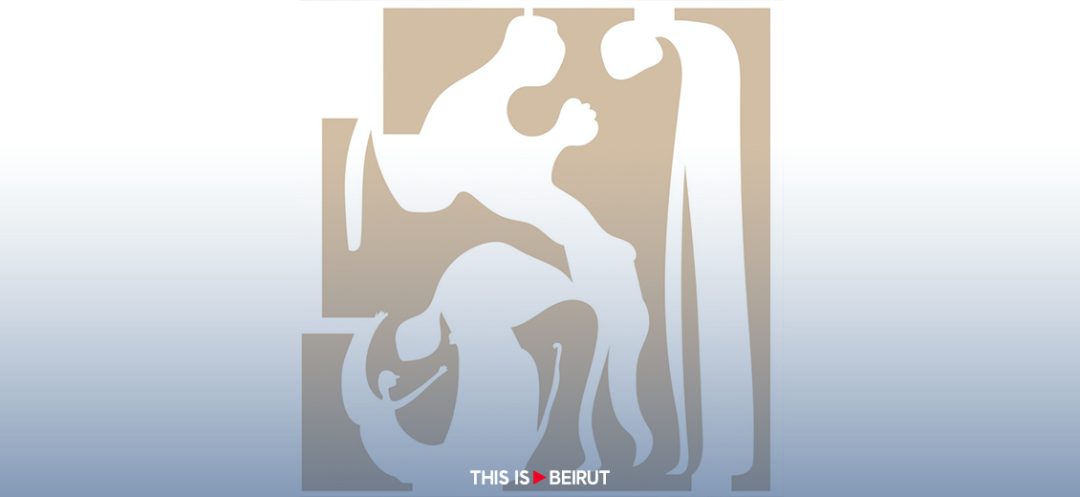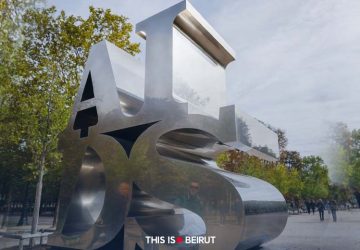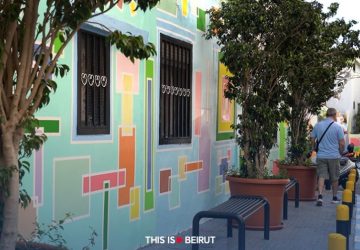Listen to the article
In the pulsating heart of Bourj Hammoud, the erstwhile Abroyan Factories are reborn as a sanctum of contemporary art, hosting the “Journal of Times, Journal of Present Times” exhibition. This symbiosis of stories, spaces and reflections that transcend both time and space, expertly curated by Nayla Tamraz and envisioned by the visionary artist Nadim Karam, welcomes visitors from March 27, 2024, promising an immersive engagement until May 2, 2024.
Through his bold sculptures and enveloping installations, Nadim Karam initiates a poetic dialogue with urban fabric, inviting deep contemplation on the essence and future of our inhabited spaces. The artist crafts captivating visual narratives with cities and landscapes, redefining space through his evocative sculptures. For him, cities must dream. His education in Lebanon, augmented by doctoral studies in Japan and international exhibitions, endowed the artist with an open and enriching perspective. Far from being detached from his era, he confronts and constructs his art in the face of contemporary challenges, navigating social realities and eternal questions of identity. He deconstructs and recreates spaces to reinvent perceptions of diversity within societies, adopting a creative and innovative approach marked by absurdity when addressing critical and crucial subjects.
Nayla Tamraz, curator of the “Journal of Times, Journal of Present Times” exhibition, elaborates on the concept of deconstruction in reinventing the space within which an individual evolves in History. She explains, “If you speak of deconstruction as a concept, as defined by French philosopher Jacques Derrida, one might indeed imagine, as you suggest, ‘that it recreates the space in which a being evolves within History,’ since the essence of this concept is that, ultimately, it is quite flexible. So, if deconstruction is, above all, a critical way of approaching the world by questioning established categories, then yes, a deconstruction work can lead to a redistribution of spaces and their meanings, and thus a recreation of spaces in History. These spaces are those we traverse, paradises lost for some, hells for others. They lose their innocence or acquire it, just as unexpectedly. This leads to a recreation of History itself. Of course, the same applies to our internal landscapes which can be mutable, reconfiguring, reconceiving, pushing us to remodel our own perspective, the one we have of them. Thus, multiple narratives of the same life can exist. If we agree that documenting History also serves to question, or even rewrite it, from this perspective, it can become a work of creation. Therefore, it is not surprising that contemporary artists have seized it, also mobilizing a work of narration.”
Regarding the role of internal spaces and contemporary artists in rewriting or documenting History, she attests, “Indeed, there is a lot of narration in Nadim Karam’s work, since it is ultimately about him in this exchange. Narration, yes, and this exhibition ‘Journal of Times, Journal of Present Times’ was conceived as a journal that transcribes and, in a way, documents the events of the region, something that would be as close as possible to diaristic practice – I must also remind here that the French title of the exhibition is ‘Petits récits pour une grande Histoire’ (Small Stories for a Great History). But deconstruction, no. Nadim Karam’s work narrates the world’s violence but does not question the order of the latter. There is indeed a work of deterritorialization (Deleuze) in this writing of History, but it does not go hand in hand, it seems to me, with a work of deconstruction.” Responding to the question of why Nadim Karam’s art is “controversial,” Nayla Tamraz asserts, “It is controversial because, to start with, and linking back to what was previously mentioned, not questioning the world order, Nadim Karam’s work is thus not sufficiently political. It is certainly political, somewhere, by the violence it denounces, and thus by its messages, but it is not subversive, does not develop agency. This term refers to the power to act upon one’s environment and constitutes a paradigm that significantly structures contemporary art. Thus, there is, in Nadim Karam, a political aspect that is ignored or wishes to be ignored, a stance that has little place within the more subversive contemporary art, and this is partly what has led, it seems to me, to the misunderstanding or controversy created around The Gesture. In August 2021, a year after the Beirut port catastrophe, Karam presented the sculpture The Gesture to the City. He was criticized for having collaborated with those involved in the port tragedy to realize this statue, for having instrumentalized the families’ pain, and for having taken action before a mourning process had been completed. The consent of the victims’ families was questioned. More seriously, he was reproached for having constructed a statue on the very site of the crime, that is, in a space where, theoretically, it is forbidden to undertake action before an investigation has been conducted and completed. These various positions reflect a complex reality whose complexity, even today, is impossible to grasp unequivocally. Thus, the desire to exhibit works related to The Gesture today signifies an intent to reposition this work within the context of its reception, which now forms an integral part of the artwork itself. More fundamentally, it is a way to show that an object is, politically, never innocent, especially when one decides to exhibit it, and to expose oneself through it. Discussing it anew is a way, between artist and curator, today, to reactivate this debate, to expose it.”
This exhibition, “Journal of Times, Journal of Present Times,” thus invites the public to embark on an introspective journey into the heart of human and urban complexity, guided by the artistic vision of Nadim Karam and the curatorial reflection of Nayla Tamraz. It is an exploration of art’s capacity to document, question and transform our understanding of History and ourselves, while confronting us with the political and social realities of our time.




